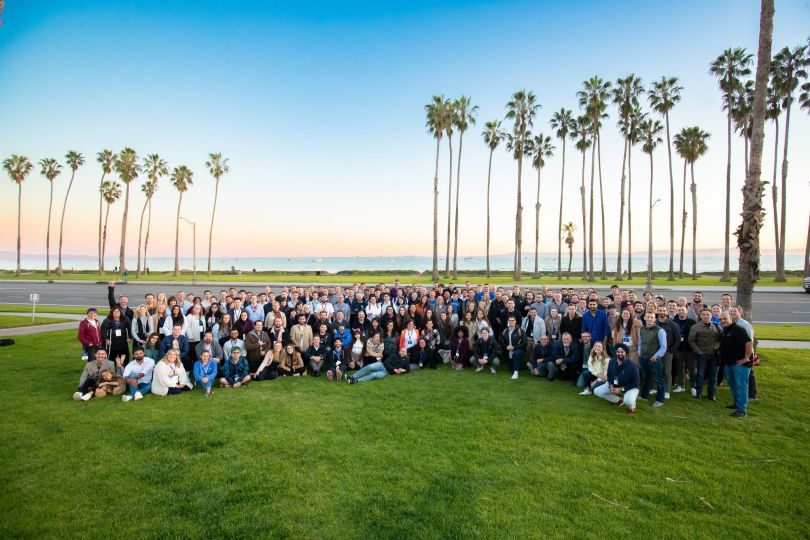Is a wedding day the “most important day of your life” or the one of a series of large and small occasions that make up a marriage?
While engaged couples may encounter the wedding industry tagline many times as they plan their nuptials, a seemingly equivalent number of friends and family members are ready with a reminder that they have many important days ahead to consider, as well.
Similar truisms and lessons surround product launches for tech professionals. Yes, this is the day your team has been waiting for — finally sharing all your hard work with the world. But there are plenty of lessons and iterations yet ahead.
“How we manage a product post-launch can make or break the product,” Ali Sebring, senior product manager at HG Insights, told Built In Los Angeles. “My best advice for ensuring success post-launch is to make it really, really easy for users to provide feedback and make it a priority to collect, analyze, and act on that feedback.”
Sebring’s responsive approach is shared by Thrive Market’s VP of Product and Design Jonas Klink.
“If you approach your first launch and subsequent iterations with a learning mindset that allows you to quickly iterate toward something that delivers meaningful value to your customers and your business, you are off to a great start,” Klink said.
This iterative approach to the product life cycle is embedded in the new “ways of working” that Thrive Market introduced in late 2022 and, according to Klink, has been transformative for both process and culture at the company.
Built In Los Angeles learned more from Sebring and Klink about how taking a product journey well beyond launch day helps their teams maintain success.

After a product launches, what’s your approach to product management in the weeks, months or even years after?
To ensure a product is successful long term, it's important to monitor user feedback, analyze usage and adoption, refine and execute a roadmap and manage the product life cycle.
User feedback is essential in understanding usage and identifying areas for improvement and growth. There is so much we can learn in the immediate weeks after launch, and this feedback should be the heart of future product decisions. Additionally, tracking user engagement and click activity post-launch can help us gauge the product's success and identify areas that require attention.
When we launch a product, we should have a rough guess of a roadmap that outlines the product's future direction in alignment with the company's overall strategy. This roadmap will and should evolve based on actual usage metrics and customer feedback. As we consider the product life cycle in the years after launch, we may need to make decisions about when to sunset the product, introduce new versions, or pivot the product's direction.
What’s the most successful strategy or initiative you’ve implemented that ensured the product remained successful after launch?
It's tempting to jump right into the next big thing, but we need to pay attention to how the product is being received by the market to ensure that it's achieving the desired outcome on a larger scale. To make this easy, I am a big fan of in-app feedback buttons. A feedback button in the application makes it so that customers can provide feedback when it is most convenient for them, which means more frequent and better feedback. By continuously monitoring customer feedback and incorporating suggestions, we ensure that the product stays relevant and meets the ever-changing needs of the market.
What impact have your strategies for deployment had on the long-term success of HG Insights’s products?
There are endless benefits to truly listening to your customers and learning as quickly as possible what is working and what needs to be improved for the product to be successful in the market long term. When we improve the product quickly based on direct customer feedback, we build customer confidence, create power users and product advocates, increase product engagement and increase likelihood of achieving the desired outcome whether that is retention, new ARR, cost reduction or any other goal.
After a product launches, what’s your approach to product management in the weeks, months or even years after?
At Thrive Market, ensuring post-launch success is a huge part of what we do.
Within any given company, the first step for a successful launch is actually most often a mindset change, in the sense that teams should be thinking about a launch as only the first of potentially many iterations based on learnings. Rarely, if ever, is a launch an “end-all-be-all”-type scenario, where we’d immediately move on to the next thing on the backlog without budgeting time for iterations. Many companies fail to anticipate inevitable iterations in a fervor to cram as many distinct features into their roadmaps as possible.
At Thrive Market, we’re taking that mindset a step further and embracing these iterations since they offer such valuable learnings based on customer data at scale. As a result, we strive to spend less time attempting to prophesize how a given solution will solve every angle of a customer problem and more time understanding how we can reach 80 percent of the learnings we seek with 20 percent of the effort. We understand that most companies who know their customers well have a win rate of between 10 and 40 percent, where the sweet spot is often quoted as 30 percent.
In practice this means that roughly only one out of three ideas will actually move the metrics you care about in a meaningful way, and the key becomes to build confidence as quickly and with as low an effort as possible to sort out the good ideas from the bad. Otherwise, if you spend a lot of time building and launching ideas with low confidence based on lack of real data, you’re in for some very painful conversations post-launch. Remember, the most expensive product ever built is one which no one actually uses.
The most expensive product ever built is one which no one actually uses.”
What’s the most successful strategy or initiative you’ve implemented that ensured the product remained successful after launch?
Embracing learning velocity as a core metric has proven instrumental here at Thrive Market, crystallizing our focus on testing and launching many ideas with quality, quickly. As long as you keep a close eye on your win rate and the average impact of each win, speed becomes a very important metric. Thankfully, it is often in the team’s sphere of influence to optimize.
Once a solution is iterated upon and the team is confident it’s solving the customer problem, the product enters another phase of its lifecycle: maintenance. On the surface, this may sound boring, but it’s actually a critical part of the product development life cycle. This phase includes looking at your data to confirm the actual impact your combined set of launched products have on key business and engagement metrics. Adding this final piece to your feedback loop is another key part of a learning mindset. Without it, even with the most robust A/B testing framework, you may be missing an opportunity to address key gaps between what’s been the value proven in testing versus the real value to your customers and business. It’s also important to remember that the value of an initially successful product may diminish over time, so ongoing tracking of impact is equally important.
What impact have your strategies for deployment had on the long-term success of Thrive Market’s products?
We implemented the key pieces of this model in the later half of 2022, as part of up-leveling our ways of working, and the results have already been transformative. Our learning velocity is twice as fast without an increase in the number of people working on a given product area and while maintaining the same, and in some cases higher, healthy win rate based on our historical lookback. This forms the foundation of a much more predictable path to moving our primary KPIs, already resulting in an over 25 percent year-over-year increase in some areas.
The team is energized and happier with the work, even beyond the satisfaction of delivering meaningful results, as they are seeing their ideas making their way toward helping our customers at scale much more quickly. This process has brought a sense of pride to everyone’s craft and confidence that we will continue to move the needle when operating in this manner — with the discipline of articulating a clear problem statement; forming a strong hypothesis as to how a given idea might address all or part of that problem; applying a robust scientific approach to running A/B tests to prove or disprove this hypothesis; and getting creative in how to lower the effort required to launching that test.
Thrive Market’s mission is to make healthy living easy and affordable for everyone. Our improved ways of working are helping us make that a reality much sooner.









